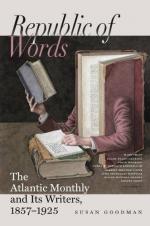The trial of the conspirators began on Wednesday, June 19th. At the request of the Intendant, Justices Kennedy and Parker summoned five freeholders (Messrs. Drayton, Heyward, Pringle, Legare, and Turnbull) to constitute a court, under the provisions of the act “for the better ordering and governing negroes and other slaves.” The Intendant laid the case before them, with a list of prisoners and witnesses. By a vote of the Court, all spectators were excluded, except the owners and counsel of the slaves concerned. No other colored person was allowed to enter the jail, and a strong guard of soldiers was kept always on duty around the building. Under these general arrangements the trials proceeded with elaborate formality, though with some variations from ordinary usage,—as was, indeed, required by the statute.
For instance, the law provided that the testimony of any Indian or slave could be received, without oath, against a slave or free colored person, although it was not valid, even under oath, against a white. But it is best to quote the official language in respect to the rules adopted. “As the Court had been organized under a statute of a peculiar and local character, and intended for the government of a distinct class of persons in the community, they were bound to conform their proceedings to its provisions, which depart in many essential features from the principles of the Common Law and some of the settled rules of evidence. The Court, however, determined to adopt those rules, whenever they were not repugnant to nor expressly excepted by that statute, nor inconsistent with the local situation and policy of the State; and laid down for their own government the following regulations: First, that no slave should be tried except in the presence of his owner or his counsel, and that notice should be given in every case at least one day before the trial; second, that the testimony of one witness, unsupported by additional evidence or by circumstances, should lead to no conviction of a capital nature; third, that the witnesses should be confronted with the accused and with each other in every case, except where testimony was given under a solemn pledge that the names of the witnesses should not be divulged,—as they declared, in some instances, that they apprehended being murdered by the blacks, if it was known that they had volunteered their evidence; fourth, that the prisoners might be represented by counsel, whenever this was requested by the owners of the slaves, or by the prisoners themselves, if free; fifth, that the statements or defences of the accused should be heard in every case, and they be permitted themselves to examine any witness they thought proper.”




